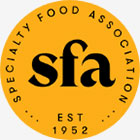

Macro trends vs. micro trends in CPG food packaging design
How to utilize trendscaping to create relevance for your brand.
Positioning based on leveraging a solid foundation around macro trends with a gentle lean into carefully selected micro trends is a smart combination for CPG food packaging design and can lead to strengthened longevity.
One of the more significant challenges for CPG food brands is staying ahead of the curve with the timeline required for rolling out new packaging. Design and consumer interest trends are frequently changing, and responding in a digital environment is much easier. Brands can’t ignore trends because they must remain relevant, and packaging needs to reflect that.
What are some macro trends in CPG food packaging design?
Macro trends are large-scale, overarching trends that majorly impact society, culture, and the economy. They are long-lasting, usually slow to change and relate to broader human interests. Some examples of current macro trends in CPG food packaging design include sustainability, health and wellness, and convenience.
The appealing thing about macro trends is that they build over time and stick around for a while. If you can incorporate some of these macro trends into your forecasting and anticipate them early enough, you’ll be seen as a leader of a big idea. Take Cliff Bar: Twenty years ago, sports nutrition was a macro trend just starting to gain mass appeal outside the small health food retailer footprint. By building on health and wellness momentum in the emotional food space, combined with convenience and “better-for-you” macro-trends, Cilff Bar catapulted the protein bar into the mainstream, which is now an enormous category.
Incorporate macro trends into your forecasting and anticipate them early enough. You’ll be seen as the leader of a big idea.
What are some micro trends in CPG food packaging design?
Micro trends are smaller, more specific trends that come and go relatively quickly. They often emerge as a reaction to macro trends. For example, a new flavor or product type could meet a specific need or want. The Pumpkin Spice craze is a response to micro-trends. In design and positioning, micro trends focus on one consumer sect’s interests, like the world’s current obsession with millennials. Plant-based is another micro-trend right now with the potential to become a macro-trend because it solves world-sized problems. Micro-trends allow you to shift some of your messaging and forecast more prominent trends to come. From 1977 until 2020, Silk didn’t own “plant-based” as part of the key messaging, but now they have a massive yellow violator calling attention to their legacy as a plant-based product.
The Risk of Leaning Too Hard on Trends
While staying abreast of consumer interest is essential, there is such a thing as being overly trendy. If you try to capitalize on every trend, you risk making your product seem dated before it even hits store shelves. Limited editions, licensing, or partnerships convey an awareness of real-time trends without impacting the overall brand messaging or story. Ice creams and cereals that lean into popular television shows dive into the “right now” without altering the entire brand legacy.
The key is to strike a balance between being current and timeless. Focus on an infallible foundation for your brand that will stand the test of time, and then incorporate trending elements sparingly. This way, you can stay ahead of the competition without sacrificing the integrity of your brand.
Some macro trends involve social implications. Read more here.










